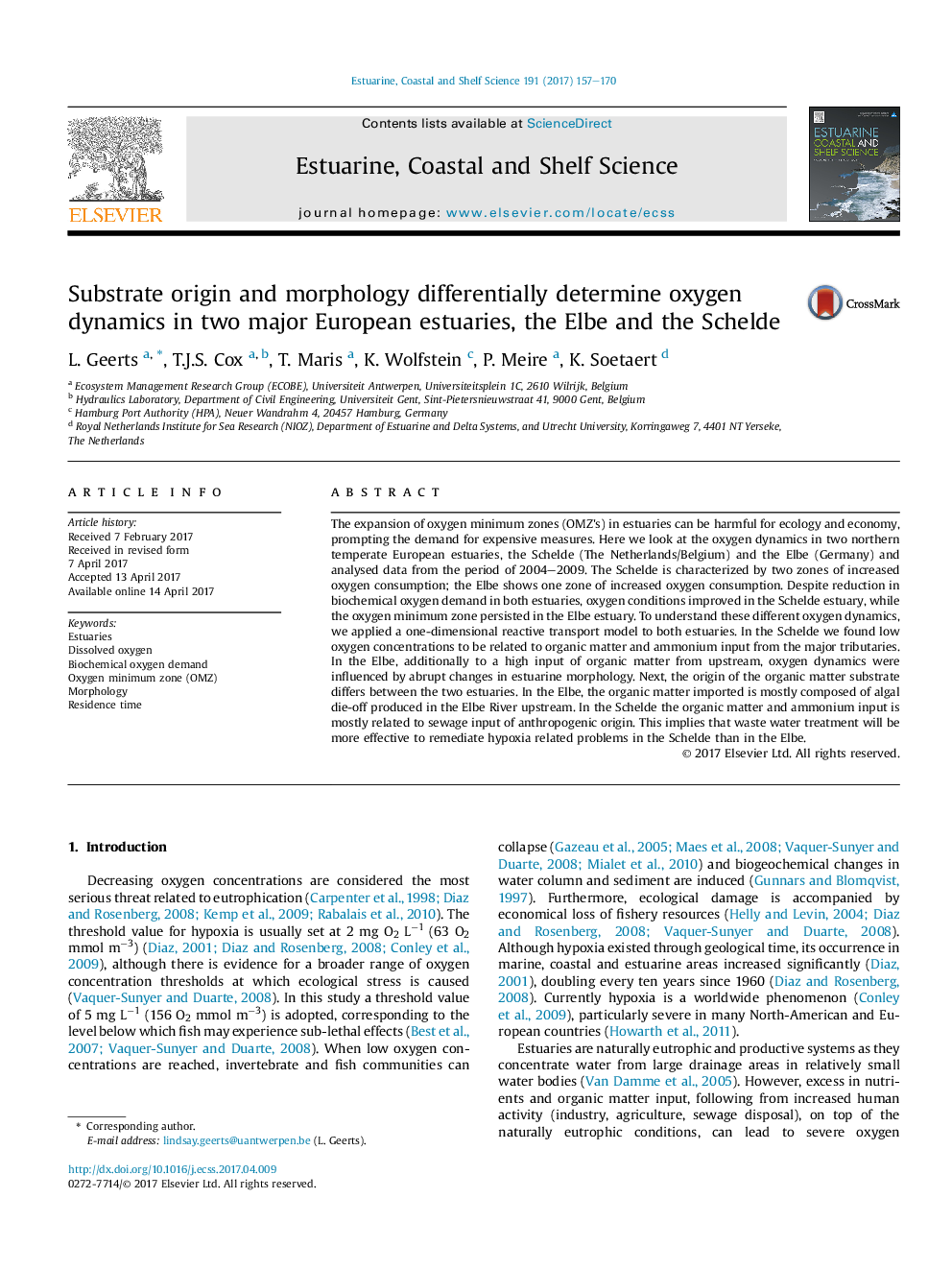| کد مقاله | کد نشریه | سال انتشار | مقاله انگلیسی | نسخه تمام متن |
|---|---|---|---|---|
| 5765335 | 1626611 | 2017 | 14 صفحه PDF | دانلود رایگان |
- Estuarine morphology influences O2 dynamics through its effect on air-water exchange and residence time.
- The origin of OM input determines the type of measures that can increase O2 concentrations and constrain their potential success rate.
- Differences in morphology and origin of OM explain the differential response of Schelde and Elbe to efforts to increase O2 concentrations.
The expansion of oxygen minimum zones (OMZ's) in estuaries can be harmful for ecology and economy, prompting the demand for expensive measures. Here we look at the oxygen dynamics in two northern temperate European estuaries, the Schelde (The Netherlands/Belgium) and the Elbe (Germany) and analysed data from the period of 2004-2009. The Schelde is characterized by two zones of increased oxygen consumption; the Elbe shows one zone of increased oxygen consumption. Despite reduction in biochemical oxygen demand in both estuaries, oxygen conditions improved in the Schelde estuary, while the oxygen minimum zone persisted in the Elbe estuary. To understand these different oxygen dynamics, we applied a one-dimensional reactive transport model to both estuaries. In the Schelde we found low oxygen concentrations to be related to organic matter and ammonium input from the major tributaries. In the Elbe, additionally to a high input of organic matter from upstream, oxygen dynamics were influenced by abrupt changes in estuarine morphology. Next, the origin of the organic matter substrate differs between the two estuaries. In the Elbe, the organic matter imported is mostly composed of algal die-off produced in the Elbe River upstream. In the Schelde the organic matter and ammonium input is mostly related to sewage input of anthropogenic origin. This implies that waste water treatment will be more effective to remediate hypoxia related problems in the Schelde than in the Elbe.
278
Journal: Estuarine, Coastal and Shelf Science - Volume 191, 15 May 2017, Pages 157-170
